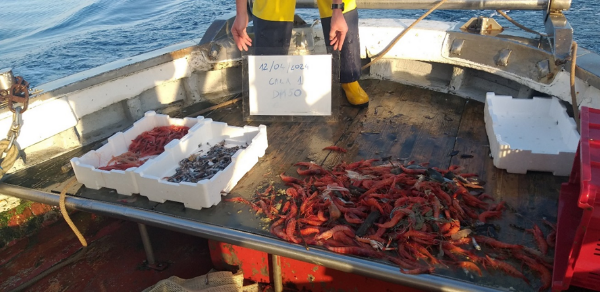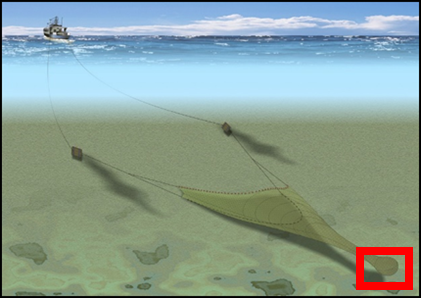About the project
EcoeFISHent aims to reconcile human economic activities with marine ecosystems through the creation of circular value chains interconnecting blue and green economies. The project focuses on sustainable fish-processing side streams and innovative solutions to reduce bycatch, enabling the preservation of marine biodiversity and ecosystems. A key focus is improving fishing practices in the Mediterranean to support healthier marine populations while ensuring long-term sustainability in fisheries.
Description of success
EcoeFISHent has addressed the challenges of bycatch and overexploitation in the Ligurian Sea’s red shrimp fishery through the development and testing of more selective fishing nets. Conventional bottom trawling practices result in high levels of bycatch, including juvenile shrimp that are vital to population recovery but hold little commercial value. To combat this, the project worked closely with fishers to design and test experimental nets with wider net openings.

Figure 1: Catches retained in the net (on the vessel deck) and escaped from the codend meshes (polystyrene boxes)
The red shrimp is typically caught through bottom trawling, where a net is dragged along the sea floor. This method often results in the capture of marine species that are non-commercial or organisms that are too small to sell or below the minimum legal size required by EU regulation, including juveniles. This bycatch is thrown back into the sea, mostly dead, causing disruption and damage to the ecosystem and depleting commercial stocks. The capture and loss of organisms before they can reproduce, such as with juveniles, disrupts ecosystem balance and population dynamics. To combat this, EcoeFISHent coordinated with fishers to design and test experimental nets with larger mesh sizes (meaning that the net openings are larger) at the end of the net, that allow smaller bycatch to pass through.

Figure: 2 Scheme of the bottom trawl net. The red line delimits the part of the net (codend) where the different mesh sizes were experimented
The EU places a minimum limit on the mesh size of nets, however, the project tested nets with larger mesh sizes than the minimum required. Sea trials took place that compared the effectiveness of the new nets in reducing juvenile capture to nets currently used by fishers. The results revealed that these innovative nets significantly reduced the capture of juvenile shrimp, increasing the size of the first capture (the size at which individuals are likely to be caught) from 10 mm to 29 mm in length. This milestone demonstrates the potential for simple yet effective technical modifications to enhance sustainability. The success of the initiative was underpinned by strong collaboration with the fishing community, ensuring the solutions were practical and well-received.
Highlights
- Collaborated closely with fishers to identify challenges and co-design technical solutions.
- Developed and tested selective fishing nets with wider net openings during sea trials.
- Demonstrated a significant reduction in the capture of juvenile red shrimp.
- Produced detailed data analysis and a selectivity report to inform sustainable fishing practices.
- Showcased the potential for scaling these solutions across other fisheries to reduce bycatch.
Outputs
EcoeFISHent has designed, produced and tested nets that are able to selectively reduce the bycatch of juvenile red shrimp. The results from sea trials have demonstrated that using nets with larger mesh sizes led to an increased first capture size and a reduced number of captured juvenile red shrimp. The project has also produced:
Survey and data analysis report on the sea trials
Nets and bycatch reduction devices
Impact
EcoeFISHent has set a pathway for more sustainable fishing practices, directly addressing the overexploitation of marine resources. Reducing juvenile bycatch enhances population maintenance and recovery, while also improving the economic viability of fisheries in the long term. The project has strengthened trust and awareness within the fishing community, highlighting the necessity of adopting sustainable practices for the health of marine ecosystems and the future of the industry.
Lessons
Collaboration with fishers played an important role in designing and testing the nets. Close cooperation enabled EcoeFISHent to incorporate the knowledge and experience of fishers and increase the chance of success.
Replacing the nets currently used in their fishing fleet with the newly designed nets will come at a short-term cost to the fishers. However, the benefits will come to fruition in the medium-long term. The close collaboration with fishers increased their awareness that investing in measures to reduce bycatch is necessary for the recovery of the shrimp stocks and for the long-term sustainability of their fishing.

